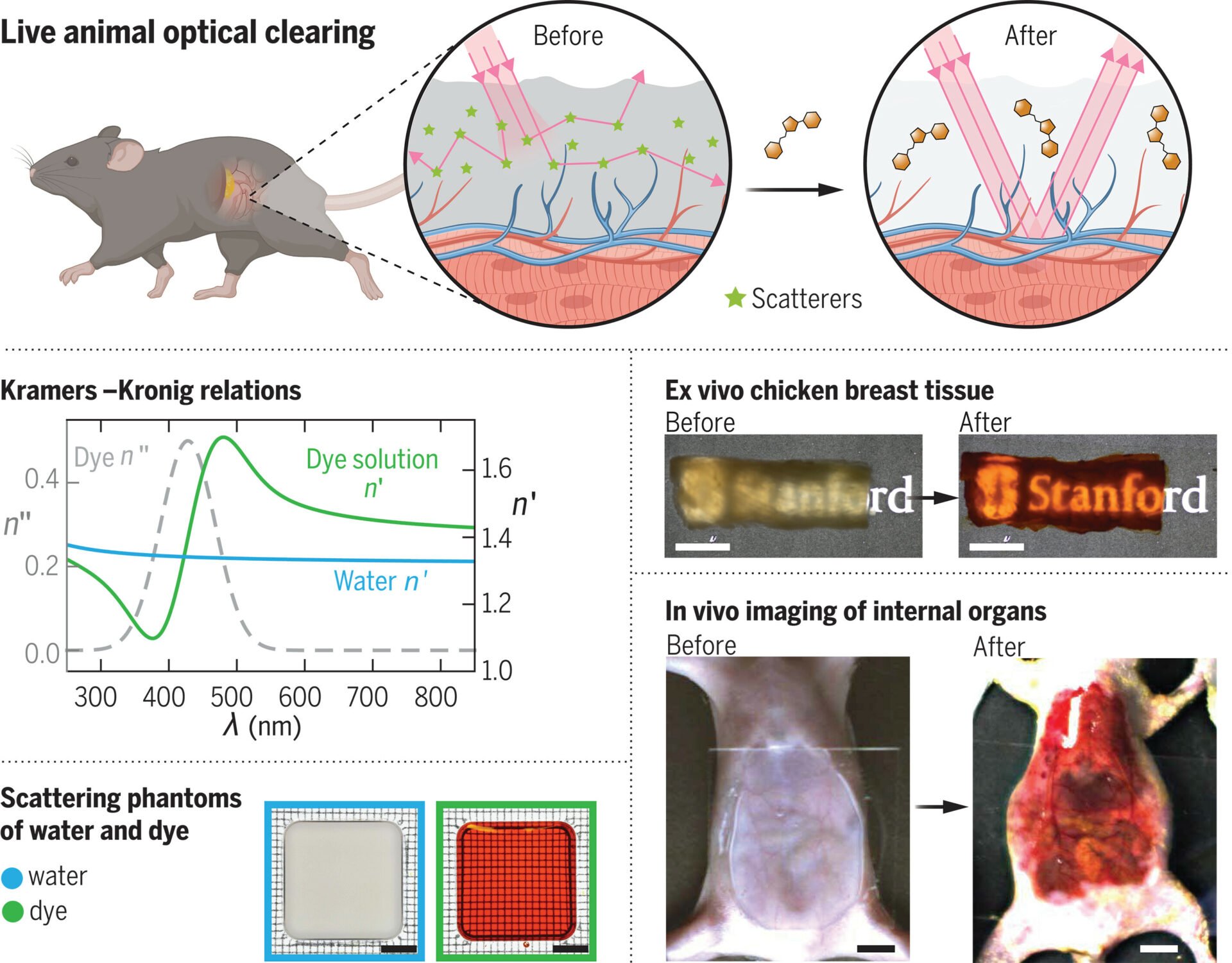Looking inside a living organism to understand how it works has never been easy. Today, we have many high-performance imaging techniques (CT scans, X-rays, MRIs, etc.), but they all have significant limitations.
American researchers have therefore explored another approach: making the skin transparent so that they can probe the inside of the body without using any harmful rays or making an incision.
Solid theoretical foundations
This innovation is the result of the work of researchers at the prestigious Stanford University in the United States. To understand the basics, we must look at the basic mechanisms of optics. Each material, whatever it may be, has a refractive index which determines how light (or any wave) behaves when it passes through it. The higher it is, the more light slows down and changes trajectory when it enters this medium. Conversely, a perfectly transparent material with a zero refractive index (which is impossible in practice) lets light pass through without the slightest alteration.
When a ray successively passes through two materials with different refractive indices, this generates what is called a diffusion : during the transition, the wave is deflected in multiple directions at once, which gives a more or less opaque appearance to the object. In living organisms, this phenomenon occurs in particular when light passes through tissues that contain water and lipids, whose refractive indices (respectively 1.33 and ~1.45 at room temperature) are different.
In theory, we can therefore make any material transparent by standardizing the refractive indices of its different constituents. And that’s precisely what the Stanford researchers tried to do with the skin of their guinea pigs.
Already spectacular results
To do this, they relied on an old set of equations, the Kramers-Kronig relations, which describe the link between two very important optical phenomena in this context: absorption and refractive index. Thanks to this mathematical tool, they were able to identify the perfect chemical compound to standardize the skin’s refractive index: the tartrazine rougean orange powder often used as a food coloring.
The team concocted a tartrazine-based solution and applied the balm to the abdomen, scalp, and hind legs of anesthetized rodents. And the results were quite spectacular. The guinea pigs’ skin first turned red, indicating that most of the blue light was being absorbed by the molecule. This sharp increase in absorption altered the refractive index of water for the corresponding wavelengths, bringing it closer to that of lipids.

Therefore, the diffusion that makes tissues opaque has almost disappeared, allowing the skin to let red light pass through without resistance. Once the treatment is complete, The authors were able to visualize the internal organs, circulatory system and muscle structure of mice with the naked eye and in real time, without any specialized imaging system.
The cherry on the cake is that the animal is not condemned to retain this ghostly appearance for the rest of its life. The procedure is completely reversible, and the transparency immediately disappeared after a simple rinse with water.
Real potential in research and medicine
This is a very promising result for animal biologists. Indeed, rodents are reference model organisms that are used to study many physiological mechanisms, and many of these studies could benefit from this progress. We are thinking in particular of studies that focus on animal development, the proliferation of cancer cells, tissue regeneration, and so on.
Beyond basic research, this innovation could also benefit the medical profession in a very concrete way if it were applied to humans. The researchers give the example of melanoma, a serious form of skin cancer. With transparent skin, a specialist could make a very informative pre-diagnosis without necessarily having to go through a biopsy — a particularly invasive procedure that involves taking a tissue sample.
The team also indicates that this technique could replace certain examinations such as X-rays, in order to limit exposure to significant doses of carcinogenic radiation.
« This could impact care and save people from having to undergo invasive tests. ” said Guosong Hong, co-author of the study. If we could simply observe what’s happening under the skin instead of cutting into it, or using radiation to get a less clear view, we could change the way we see the human body. ” he concludes enthusiastically.
The text of the study is available ici.
Source: www.journaldugeek.com


